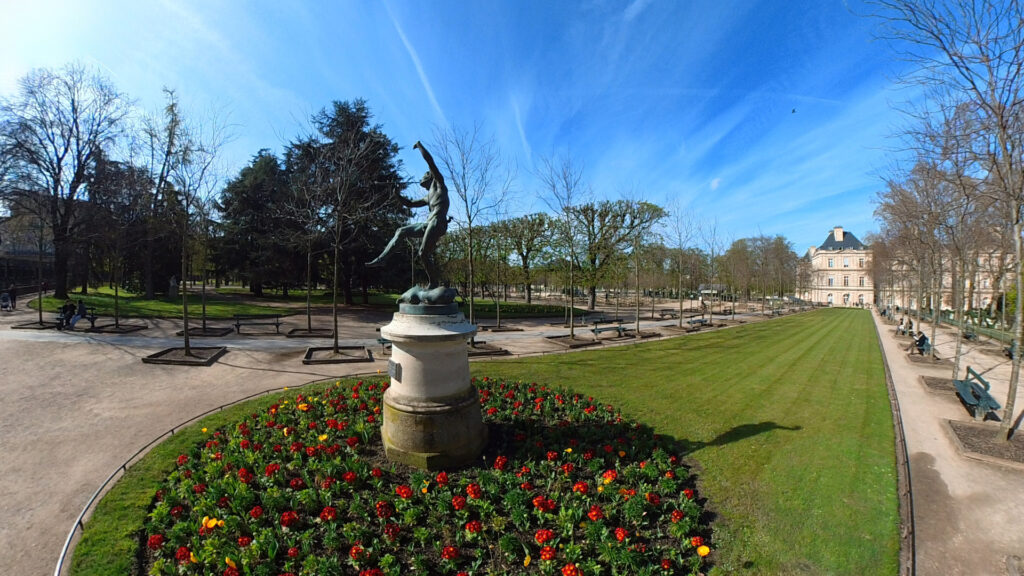
Just inside the Luxembourg Garden at the entrance called Porte Médicis stands a sculpture of a dancing faun, a half-man, half-goat deity from Roman antiquity. Sculpted by French artist Eugène Louis Lequesne (1815 – 1887), the creature dances stark naked, balancing precariously with one foot on an overfilled wineskin and playing a trumpet. A close look at the subject reveals that its only animal-like feature is a short tail.
During Antiquity, fauns represented inebriated gaiety. They were associated with Bacchus, the god of wine. Here, the intoxicated faun demonstrates his prowess at balancing on a wine-filled animal skin, an unstable surface, while playing a musical instrument.
At the base of the sculpture, one can see the following objects around the wineskin: a tambourine, a bunch of grapes, a wine cup, and a thyrsus (a pine-cone tipped staff tied with ribbon that was carried by devotees of Dionysus and Bacchus).
Lequesne started a career as a jurist, but abandoned the trade and entered the Ecole des Beaux-Arts in Paris in 1840. He gained acceptance into the Villa Médicis in Rome, where he studied classical art for five years. Inspired by an antique dancing faun that was discovered in Pompei in 1830, he created a plaster sculpture depicting his own rendering of the subject. It was cast in bronze in 1850. This metallic sculpture is the one that we admire today.

